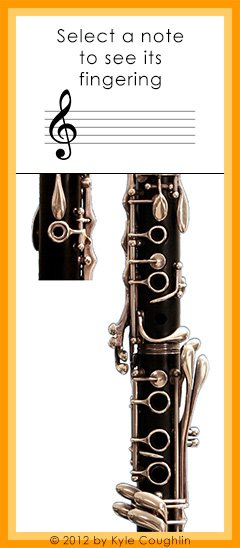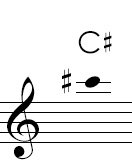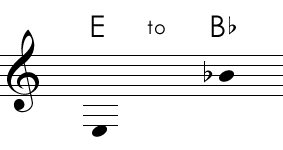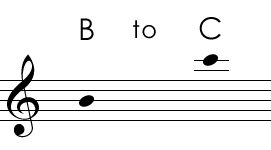Home - How-To Section - Low Register Fingering Chart - Upper Register Fingering Chart
Interactive Altissimo Register Clarinet Fingering Chart
Select a pitch in the chart below to see its clarinet fingering. You can hear an audio file to listen to the pitch. Alternate fingerings are given when available. These interactive fingering charts will work on iPhones, iPads, and all portable devices.
Read the suggestions below to determine which altissimo fingering to use.
View the interactive lower register clarinet fingering chart.
View the interactive upper register clarinet fingering chart.

Suggestions for the Altissimo Fingerings
This chart includes the standard fingerings and alternate fingerings for the altissimo register of the clarinet. While there are other alternate fingerings that are possible for each of these pitches, the purpose of this chart is to provide clarinetists with the fundamental altissimo fingerings.
To determine the best choice of fingering for an altissimo note, the following conditions should be considered:
Intonation: Pitches in the altissimo range can be very out of tune. Use a fingering that you can play in tune. Practice with a tuner to see what works best. Many of these fingerings can be altered slightly by opening a key, or placing a finger on an extra tone hole. For example, you can improve the pitch of high F sharp by opening up the extra right hand key, as shown in the second fingering for that pitch.
Ease of fingering: Many of the fingerings in the altissimo range are initially awkward to play. Even if a fingering produces a tone that is in tune, if it is impossible to reach, it will not help you.
Tone quality: If you play five different fingerings for the same pitch, it is unlikely that any of them will share the same tone quality. Whenever possible, use the fingering that produces the best tone.
Ease of articulation: Some fingerings play very well in tune and are easy to reach, but if they are difficult to consistently articulate, you should try a different fingering.
All clarinets are different: No two clarinets are exactly the same, and specific fingerings might work well on some instruments, but might be very out of tune on others. Play each fingering with a tuner to see what works best on your instrument. Try adding or subtracting fingers to improve the pitch or tone, if necessary.
All of these factors should be considered when selecting the appropriate fingering for an altissimo note. Depending on the musical situation in which the altissimo note occurs, you must decide which priorities are most important and select the best fingering.
More Educational Tools from Kyle Coughlin
Learn all about rhythm and improve your sight reading. Rhythm-In-Music.com is an interactive website that teaches all of the fundamental aspects of rhythm, covering beat, tempo, meter, time-signature, and all note values. It is an online version of Kyle Coughlin’s book The Fundamentals of Rhythm, featuring over 450 different rhythm patterns for practice, with audio recordings of each pattern.
View the interactive lower register clarinet fingering chart
View the interactive upper register clarinet fingering chart
If you like these free music tools, please spread the word!
Follow Kyle Coughlin Music




















